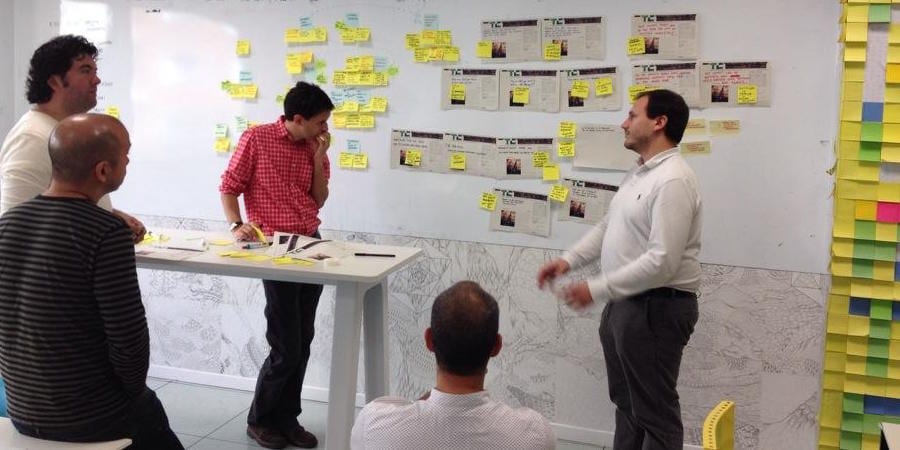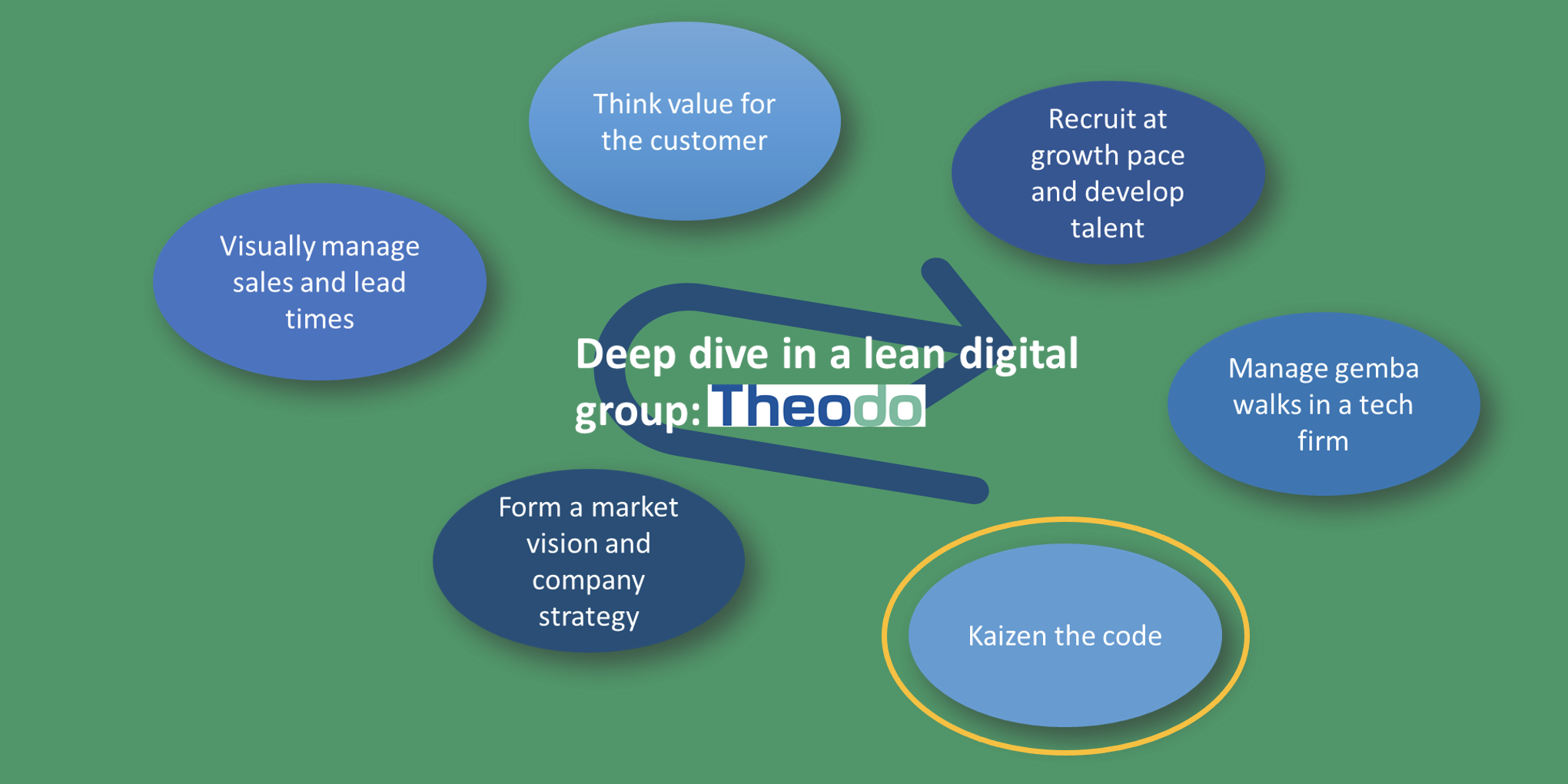
Telefonica: applying lean startup principles in a large firm
INTERVIEW – Planet Lean speaks with telecommunications company Telefónica about the organization's attempt to apply lean startup principles in its R&D department.
Interviewee: Susana Jurado Apruzzese, Innovation Manager and mentor, Telefónica
Photo copyright: Telefónica, S.A.
Planet Lean: What led Telefónica to adopt lean startup principles to its R&D function?
Susana Jurado Apruzzese: Until 2011, our approach to innovation was very traditional: there was an innovation budget and top management decided on what projects to use it. Only a small part of the funds available for innovation was allocated to ideas coming from employees. We usually spent months building a prototype, but had no direct contact with customers to determine whether we were addressing a real problem for them or if the solution we were building was the best one to solve that problem. Therefore we were spending our time and resources on projects with no market validation from the beginning, which of course made the commercialization of our innovation products quite difficult. You had to be very lucky to come up with a first prototype of the product that customers were actually interested in.
At the end of 2011 we decided to try a different approach. Telefónica is certainly not a startup, but the uncertainty and the challenges that innovation teams in the R&D department face are actually very similar to what startups have to deal with. We wanted to determine whether lean startup principles could work in a large corporation.
PL: How did you start applying those principles?
SJA: We kept our experiments bounded, and tried to apply lean startup principles to two innovation projects and afterwards to a program called 10 Fridays (similar to Google’s “20% time” policy), under which employees could present their ideas and, depending on the budget, see them financed. Once an idea was funded (selection happened by drawing lots), the team had 10 days (not necessarily Fridays) to work on it and implement it.
The experience we gained through these experiments gave us the confidence to make lean startup principles a pillar of the innovation process – in the execution phase – in Telefónica’s R&D department. But, of course, we didn’t know everything (or enough, for that matter). The real learning came when all the innovation projects teams started working like startups.
It was very difficult to bring startup principles to an organization as large as Telefónica, but their impact on our innovation process was incredible. Over time, we were able to fundamentally change the way people work and convince them to get out of the building and go talk to customers.
PL: What was the biggest difficulty you encountered along the way?
SJA: The main challenge is that we are a 90-year-old, massive organization. Our processes were not designed for fast iteration, but to find efficiencies around Telefónica’s core business. Take purchasing, for example. The purchasing process is optimized for purchases of significant amounts of money and to take advantage of economies of scale. The priority is the savings obtained, not speed. We had to explore this process and carry out an in-depth analysis of the possibilities we had: for innovation projects applying lean startup ideas, speed is critical to minimize risk and resource consumption. The need to shorten the time required to complete a purchase became our focus and forced us to create specific mechanisms for small purchases.
The project leader of one of our projects sat down with the Purchasing Department and explained why finding a different way of working would be necessary. They understood it perfectly, they were willing to help and agreed to create a small budget that we could use for the every-day purchases our projects called for.
PL: In your opinion, why did Telefónica succeed at applying lean startup principles to R&D?
SJA: For two reasons. First of all, as a company Telefónica invests a lot in innovation, which made our approach particularly attractive; secondly, our top management is very open-minded and lets us run all kinds of experiments, not only with our innovation projects but also with the way we are building innovation.
PL: How did you teach people lean startup principles?
SJA: Our first experiments with two innovation projects and with the 10 Fridays program showed us how critical training would be to make our people familiar with lean startup principles. We were asking people to work in a fundamentally different way, and we had to explain the new approach to them as clearly as we could.
Once we started to apply lean startup principles to all our projects, we realized that we also had to provide people with coaching. We had noticed that training alone was not enough to convince everybody to embrace the principles. And external coaches could help with what we, internal mentors, couldn’t (after all, we too were from Telefónica – we could read books about lean startup and get trained, but we didn’t come from that environment): establishing a different mindset.
I must say that we had the principles clear in mind from the very beginning. Ideas like “start small, aim high” or “iterate fast” were very clear to us. It was how to make those principles work that we needed help with, and that’s where external coaching became necessary.
PL: To what extent are lean startup principles used within the R&D department?
SJA: In general, the R&D department applies lean startup principles to any situation of uncertainty. This doesn’t of course apply to products that are already commercialized in a well-known market, as in those occasions our people tend to already know what customers want and are demanding. What we have seen, however, is that people are increasingly aware of these principles and tend to involve the customer more than ever before, even if they are not doing customer discovery or anything like that. This is a very significant change for them (engineers are not used to getting out of the building) and for the organization.
PL: Can you share a couple of examples of products you created using lean startup principles?
SJA: A good example is certainly Thinking Things, a modular internet of things platform that is highly customizable and affordable enough to appeal to SMEs. We involved four types of companies that were potentially interested in this solution and brought people to our laboratory, and created a pilot product very quickly.
There is also Mobile Connect (a product developed within the GSMA scope that provides secure authentication via the user’s mobile device). We started in February 2014 and this past summer we had already received the first purchase orders from customers of the financial industry!
PL: Is speed to go to market the main benefit you were able to reap following the introduction of lean startup principles at Telefónica?
SJA: Accelerating the innovation process is certainly the most valuable of the results we were able to achieve. This speed allows us to test more products, and the more products you test at once and with the same budget, the higher your chances to find an innovation idea that will be successful.
Until 2011, failed innovation projects could cost us a lot in terms of money and time. With lean startup we have minimized the risk by minimizing the resources invested, we even had projects that were not working and could be killed in the first three weeks (“fail fast, fail cheap” is another important principle). The investment in our innovation projects increases as the projects progress with validated learnings and, therefore, as they have less uncertainty.
The most significant change is perhaps in people’s mindset: they now know that nobody will punish you for failing, as long as you learn from the failure.
PL: What’s your suggestion for other corporations interested in making lean startup principles the core of their innovation strategy?
SJA: First of all, remember to “start small” – it minimizes risk and allows you to learn how to make lean startup work. Secondly, provide training and mentorship to your people. Finally, you need to adapt the principles to your own circumstances: take all you want from the startup world, but make it work for you (you are not a startup, after all). Don’t fight your company’s culture, but find a way to work with it… It will take time, but in the end it’s the only way.
Susana spoke at this year's Lean IT Summit - click here to see her presentation
THE INTERVIEWEE

Read more


FEATURE – For a few years now, Theodo has made of quality and customer satisfaction the main focus of its work, and it is paying off. But what does it mean to pursue and improve quality at a digital company?


FEATURE – Upon realizing they were struggling to engage people in continuous improvement, Fuji Xerox Australia’s IT team found a unique way to breathe new life into its lean efforts… a book club.


INTERVIEW – We have come to dread having to interact with customer support representatives, and quite rightly so. Basecamp has made it a mission to bring humanity back to this interaction.


CASE STUDY – Following one of the deadliest hurricanes in US history, an NGO started to use lean management principles to speed up the reconstruction of homes in the Louisiana city… and the results were impressive.

